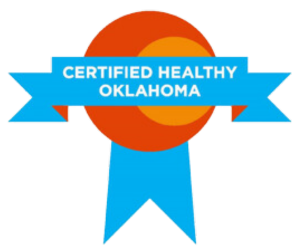Guiding Principles to Keep in Mind
The more an individual interacts with others, and the longer that interaction, the higher the risk of COVID-19 spread. Elections with only in-person voting on a single day are higher risk for COVID-19 spread because there will be larger crowds and longer wait times. Lower risk election polling settings include those with:
a wide variety of voting options
longer voting periods (more days and/or more hours)
any other feasible options for reducing the number of voters who congregate indoors in polling locations at the same time
The virus that causes COVID-19, is mostly spread by respiratory droplets released when people talk, cough, or sneeze. It may be possible that a person can get COVID-19 by touching a surface or object that has the virus on it and then touching their own mouth, nose, or possibly their eyes. Personal prevention practices (such as handwashing, staying home when sick) and environmental cleaning and disinfection are important actions election officials, poll workers, and voters can take to help lower the risk of COVID-19 spread.
Recommendations for Voters
Practice healthy behaviors to protect yourself and slow the spread of COVID-19
Wash your hands before entering and after leaving the polling location.
While in the polling location, use alcohol-based hand sanitizer containing at least 60% alcohol frequently, especially after touching surfaces frequently touched by multiple people, such as door handles or voting machines.
Cover coughs and sneezes with a tissue or the inside of your elbow. Throw used tissues in lined trash cans. Wash your hands or use an alcohol-based hand sanitizer containing at least 60% alcohol.
Wear a mask. Children under 2 and anyone who has trouble breathing, is incapacitated or otherwise unable to remove the mask without assistance should not wear a mask.
Maintain at least 6 feet (about 2 arms’ length) of distance from others. It is important to continue social distancing even when you and others are wearing masks.
Consider voting alternatives available in your jurisdiction that minimize contact. Voting alternatives that limit the number of people you come in contact with or the amount of time you are in contact with others can help reduce the spread of COVID-19. Check your local election office websiteexternal icon for more information on voting alternatives available in your jurisdiction.
Do not disinfect or wipe down the voting equipment yourself. Electronic voting equipment can be damaged by cleaners and disinfectants. If you use hand sanitizer before touching the voting equipment, ensure your hands are completely dry to avoid damaging the equipment. Wash your hands or use alcohol-based hand sanitizer after using the voting equipment.
Avoid crowds
Use early voting, if available in your jurisdiction.
Vote at off-peak times, such as mid-morning.
If driving to the polls and your schedule allows, monitor the voter line from your car and join it when it’s shorter.
Be prepared
Check your voting location and requirements in advance because they may have changed due to COVID-19.
Verify your voter registration information is correct in advance of reporting to the polling location.
Contact your local or state election office for additional information for voters with disabilities.
Make sure you have all necessary documents to avoid delays at the polling location.
If possible, complete any registration forms prior to arriving at the polling location.
Where possible, review or complete a sample ballot at home to speed the process of casting your ballot at the polling location.
Bring your own black ink pen.
Bring a stylus or similar object for use with touchscreen voting machines. Check with poll workers before using.
Recommendations for Election Officials and Poll Workers
Please review behaviors and hand hygiene and respiratory etiquette to keep voters safe.






